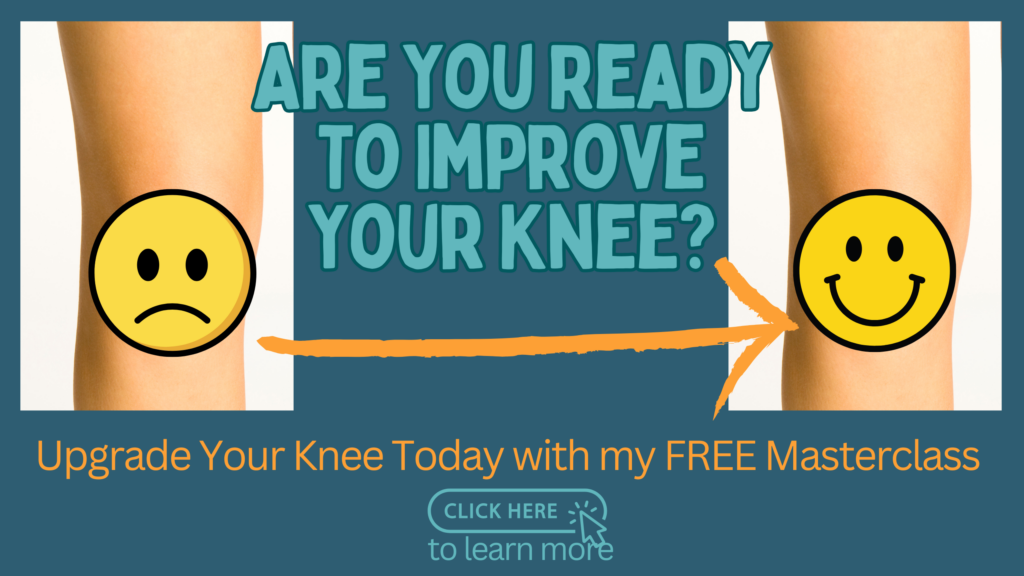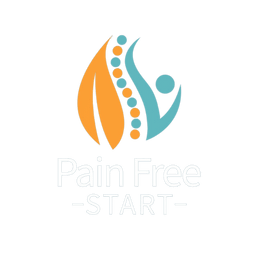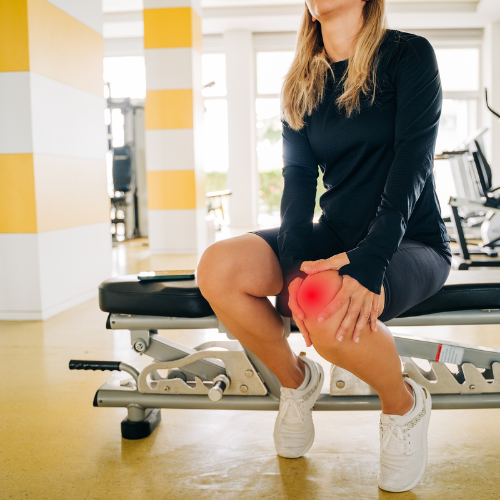Introduction
Knee arthritis is a common condition that affects many people as they age, but recognising the early warning signs can make a significant difference in how you manage it. Early intervention can help prevent further joint damage and reduce long-term pain and disability. The main regret of patients that I see in clinic is that they did not seek help sooner. So let’s learn from their mistakes. In this blog, we’ll discuss the early signs of knee arthritis and I share with you expert tips for preventing its progression.
1. Pain and Stiffness
One of the earliest signs of knee arthritis is pain and stiffness in the knee joint, especially after periods of inactivity or excessive use. You may notice a dull ache or a sharp pain that worsens with movement, such as when walking, climbing stairs, or getting up from a seated position.
What you can do:
- Adopt a little and often approach. Your knee likes to move but not too much – listen to what they are telling you! Too much activity will increase pain and stiffness but how much is too much will differ for everyone. What happens when you sit for a while or get out of bed in the morning? For most with arthritic knees after being in one position for a while your knee will be stiff and painful.
- Listen to your knee and strike the right balance aim to move and change position regularly.
- Working on strength and engaging in regular low-impact exercises, such as walking and swimming, can help reduce pain and stiffness.
- Managing swelling and inflammation will also help to reduce pain and stiffness (see below).
- Medication to help with pain can be helpful. Discuss this with an appropriate healthcare provider before starting any medication.
2. Swelling and Inflammation
Swelling around the knee joint is another early warning sign of arthritis. This can happen as the body tries to protect the joint from further stress. In some cases, the swelling may be accompanied by warmth or redness, indicating inflammation.
What you can do:
- Avoid complete rest but reduce activity levels, and avoid activities that aggravate your knee such as squatting or climbing stairs.
- Elevate your leg and apply ice to reduce swelling.
- Nonsteroidal anti-inflammatory drugs (NSAIDs) can help manage both pain and swelling, but always consult a healthcare provider before starting any medication.
- This guide to managing your acute injury will offer further guidance.
3. Grinding or Cracking Sensation (Crepitus)
If you hear or feel a grinding or cracking sensation when moving your knee, it may be due to the roughening of the cartilage in the joint. This sensation, known as crepitus, is often associated with early osteoarthritis.
What you can do:
- Regular physical therapy exercises that focus on strengthening the muscles around the knee can help stabilise the joint and improve movement.
- Ensuring that your knee is well aligned often helps to lessen this.
- Many find clicking and cracking worse when your knee is more swollen and inflamed – work to reduce this.

** UPGRADE Your Knee with my FREE Masterclass. Click for more details.
4. Reduced Range of Motion
As arthritis progresses, you may notice that your knee becomes less flexible, making it harder to fully extend or bend your leg. This reduction in range of motion can affect your ability to perform everyday activities such as squatting or bending down.
What you can do:
- Stretching and flexibility exercises can help maintain your range of motion and prevent further loss of flexibility.
- However, proceed carefully as it is easy to aggravate an arthritic knee by forcing extremes of movement.
- Like with all exercises guidance will be useful.
5. Pain That Worsens with Activity
While mild discomfort may be a normal part of ageing, arthritis-related pain tends to worsen with activity and improve with rest. If you notice that physical activity consistently makes your knee pain worse, it could be an early indicator of arthritis.
What you can do:
- Modify your activities to include low-impact exercises that don’t exacerbate pain.
- Work to build strength this will help offload your knee during exercise.
- Become curious as to the level of activity that your knee likes maybe take note of your step count and what patterns you notice with your pain.
- Take note of how your knee feels if you have more supportive footwear on or walk on different surfaces. Use this information to help manage your knee
Preventing Further Damage: What You Can Do Now
If you’re noticing any of these early warning signs, there are several things you can do to prevent further damage and manage your knee health:
- Exercise regularly: Strengthening the muscles around the knee can help support the joint and reduce strain on the cartilage.
- Learn how to manage your arthritis: This is essential to get the most out of your knee and encourage further health.
- Maintain a healthy weight: Reducing excess weight can relieve pressure on your knees and slow the progression of arthritis.
- GET EXPERT HELP: The main regret of the people I see with arthritic knees is that they didn’t get guidance earlier. There is so much that you can do to improve your knee however it is not as easy as you think. Most people have tried to self-manage their knees before coming to seek my help the exercises they try often make things worse and the information is often conflicting and confusing. If you experience symptoms of knee arthritis, it’s essential to seek medical advice early. A healthcare professional can offer a diagnosis and create a treatment plan that may include physical therapy, medications, or other interventions to prevent further joint damage.
FYI – I can help you with all of the above, I have a fabulous online program as well as coaching options. Find out more about my Arthritic Knee Program here.
Conclusion
Take Action Early to Protect Your Knees
Recognising the early signs of knee arthritis is crucial to slowing its progression. With early intervention, you can prevent further joint damage, reduce symptoms, and improve your quality of life. Taking proactive steps to manage your knee health will empower you to stay active and mobile for years to come. If you would like my help to do this I would be more than happy to assist.
Take care, Helen
Helen Manders BSc (Hons) MCSP HCPC
Chartered Physiotherapist Treating Arthritic Knees Since 2001




